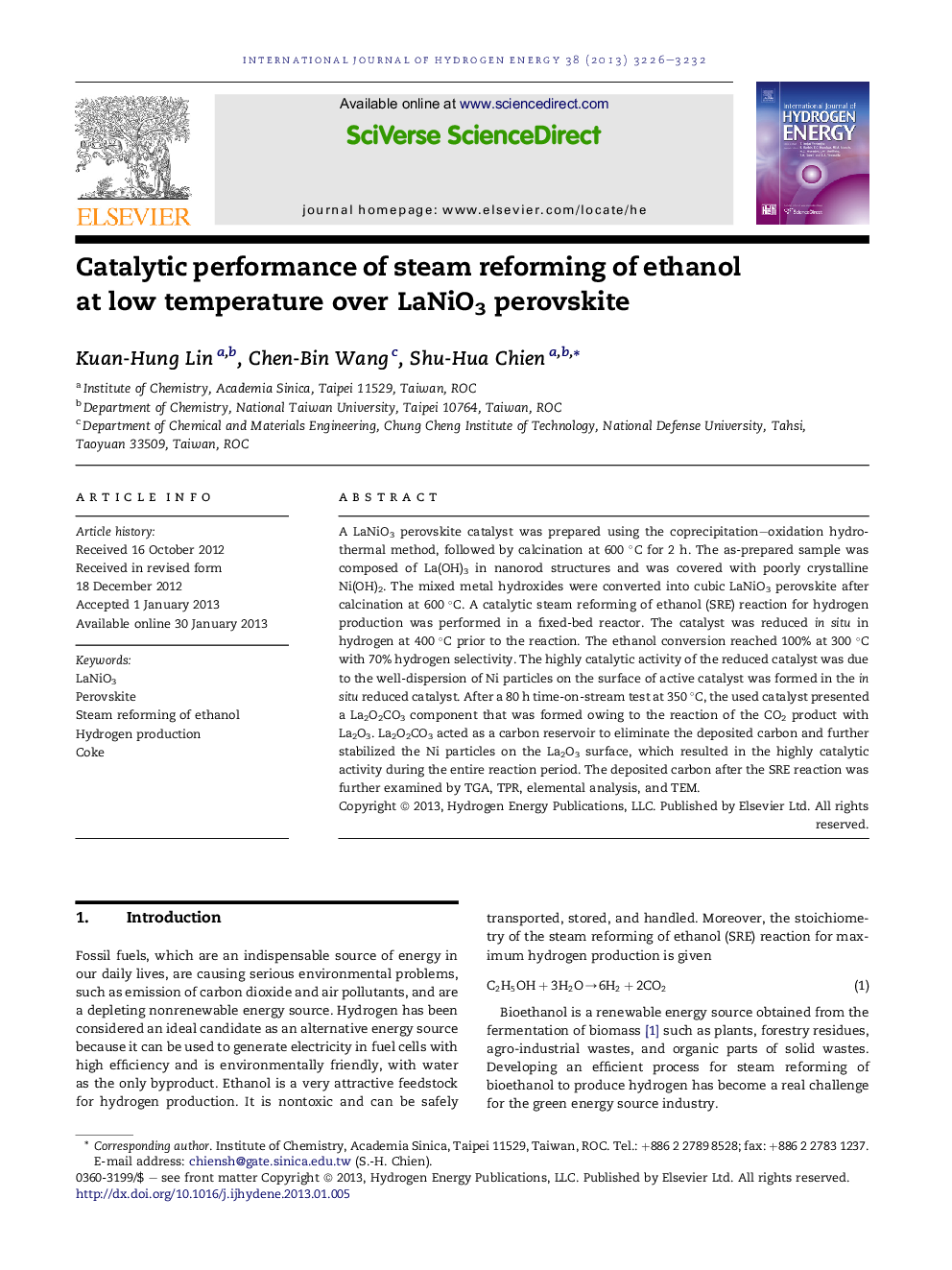| Article ID | Journal | Published Year | Pages | File Type |
|---|---|---|---|---|
| 1275737 | International Journal of Hydrogen Energy | 2013 | 7 Pages |
A LaNiO3 perovskite catalyst was prepared using the coprecipitation–oxidation hydrothermal method, followed by calcination at 600 °C for 2 h. The as-prepared sample was composed of La(OH)3 in nanorod structures and was covered with poorly crystalline Ni(OH)2. The mixed metal hydroxides were converted into cubic LaNiO3 perovskite after calcination at 600 °C. A catalytic steam reforming of ethanol (SRE) reaction for hydrogen production was performed in a fixed-bed reactor. The catalyst was reduced in situ in hydrogen at 400 °C prior to the reaction. The ethanol conversion reached 100% at 300 °C with 70% hydrogen selectivity. The highly catalytic activity of the reduced catalyst was due to the well-dispersion of Ni particles on the surface of active catalyst was formed in the in situ reduced catalyst. After a 80 h time-on-stream test at 350 °C, the used catalyst presented a La2O2CO3 component that was formed owing to the reaction of the CO2 product with La2O3. La2O2CO3 acted as a carbon reservoir to eliminate the deposited carbon and further stabilized the Ni particles on the La2O3 surface, which resulted in the highly catalytic activity during the entire reaction period. The deposited carbon after the SRE reaction was further examined by TGA, TPR, elemental analysis, and TEM.
► The catalyst was prepared by the coprecipitation–oxidation hydrothermal method. ► The ethanol conversion reached 100% at 300 °C with 70% hydrogen selectivity. ► The ethanol conversion was 100% and maintained through the 80 h test at 350 °C ► The La2O2CO3 formed acted as a carbon reservoir to eliminate the deposited carbon. ► The SMSI could stabilize the Ni particles on the La2O3 surface.
